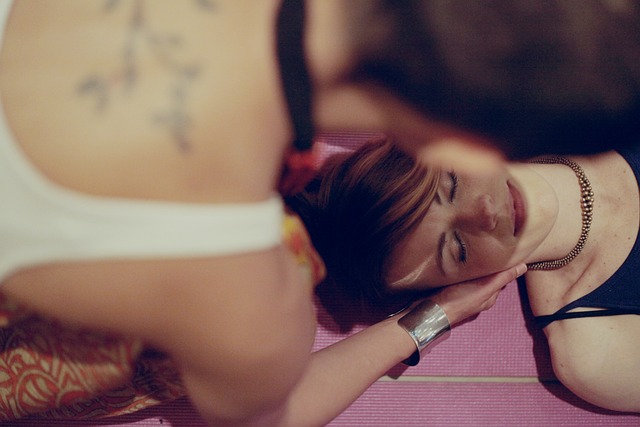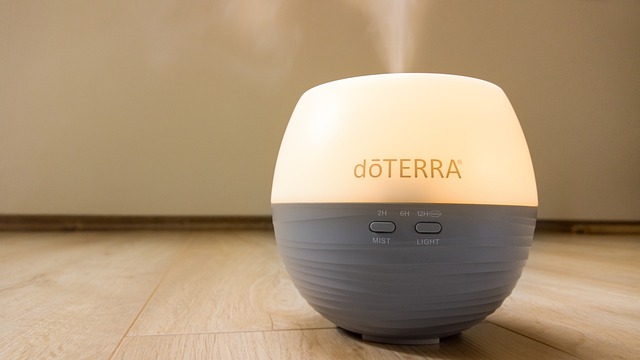Crafting a sustainable wellness routine starts by understanding your lifestyle and goals. Evaluate daily habits and commitments to identify time for wellness practices like yoga or meditation. Align your routine with personal purpose, incorporating meaningful activities such as mindfulness techniques and healthy eating. Integrate diverse wellness practices including regular exercise, deep breathing, gratitude journaling, and self-care routines for holistic well-being.
Building a sustainable wellness routine doesn’t have to be a daunting task. In today’s fast-paced world, prioritizing your well-being is more crucial than ever. This comprehensive guide will help you navigate your unique lifestyle and craft a holistic routine that incorporates mindfulness techniques, effective stress management strategies, yoga exercises, healthy eating habits, and meaningful self-care practices like gratitude journaling. Let’s embark on this journey to enhance your daily life with wellness practices tailored just for you.
- Identifying Your Lifestyle and Wellness Goals
- – Assessing your current lifestyle and commitments
- – Defining wellness goals that align with your life purpose
- Integrating Mindfulness and Stress Management Techniques
Identifying Your Lifestyle and Wellness Goals

Identifying your lifestyle and wellness goals is the first step in crafting a sustainable routine that promotes overall well-being. Start by evaluating your daily habits, work schedule, family commitments, and personal preferences. For instance, if you lead an energetic lifestyle with demanding work and frequent travel, incorporating high-intensity interval training (HIIT) or quick at-home yoga sessions might be suitable. On the other hand, a more sedentary job and limited time could call for integrating gentle stretching routines, mindful walking, and simple meditation practices throughout the day.
Consider your mental and emotional needs as well. Do you seek ways to reduce stress and anxiety? Perhaps deep breathing exercises or mindfulness techniques during short breaks can help calm your mind. If fostering a sense of gratitude is important, incorporate gratitude journaling into your routine. Healthy eating habits can also be tailored to your lifestyle; it might involve meal prepping on weekends or choosing quick, nutritious snacks for busy days. By aligning your wellness practices with your unique lifestyle and goals, you set the foundation for long-term adherence and a holistic sense of well-being.
– Assessing your current lifestyle and commitments

Before designing your wellness routine, it’s crucial to assess and understand your current lifestyle and commitments. This involves evaluating your daily schedule, work demands, family responsibilities, and personal interests. Recognize pockets of time that can be dedicated to wellness practices—even short periods can make a difference. For instance, incorporating mindfulness techniques during morning commute or deep breathing exercises during lunch breaks.
Consider your existing fitness level and any specific health concerns. This will guide the type and intensity of yoga exercises or regular physical activity suitable for you. Additionally, reflect on areas where stress management strategies and healthy eating habits can be introduced seamlessly. Perhaps a nightly gratitude journaling routine or incorporating more plant-based meals into your diet. These adjustments should feel natural and sustainable, aligning with your lifestyle rather than feeling like additional burdens.
– Defining wellness goals that align with your life purpose

When crafting a sustainable wellness routine, the first step is to define your wellness goals that resonate with your life purpose. This means understanding what truly matters to you and how you want to show up in your daily life. For instance, if creativity is a core part of your identity, incorporating mindfulness techniques like short daily meditation practices could help sharpen your focus and inspire novel ideas. Alternatively, if improving relationships is a priority, regular yoga exercises with a mindful approach can foster connection both within yourself and with others.
Aligning your wellness goals with your life purpose ensures that your practices are not mere tasks but rather integral parts of your journey. This alignment also makes it easier to maintain consistency as you’re engaging in activities that genuinely bring you joy and fulfillment. Incorporate healthy eating habits, regular physical activity, deep breathing exercises, gratitude journaling, and self-care routines into your schedule. These wellness practices, when tailored to your lifestyle, can significantly enhance your overall well-being while leaving room for flexibility and adaptation as life goes on.
Integrating Mindfulness and Stress Management Techniques

Integrating mindfulness and stress management techniques is a cornerstone of building a sustainable wellness routine. Start with incorporating yoga exercises or meditation practices into your daily or weekly schedule. Even just 10-15 minutes dedicated to deep breathing exercises can significantly reduce stress levels throughout the day. Practices like gratitude journaling have been shown to foster positive mental health by encouraging reflection and appreciation for life’s small joys.
In terms of self-care routines, healthy eating habits play a crucial role in managing stress and enhancing overall wellness. A balanced diet rich in fruits, vegetables, whole grains, and lean proteins provides the body with essential nutrients to support physical and mental well-being. Regular physical activity, whether it’s a brisk walk, a cycling session, or a HIIT workout, not only improves cardiovascular health but also acts as an effective stress management strategy. Combining these wellness practices can create a holistic routine that promotes mental clarity, emotional balance, and overall sustainability in your lifestyle.
Building a sustainable wellness routine isn’t about rigid rules but embracing practices that harmonize with your unique lifestyle. By assessing your commitments and defining wellness goals aligned with your life purpose, you create a solid foundation. Integrate mindfulness through yoga, meditation, deep breathing, or gratitude journaling to reduce stress. Adopt healthy eating habits, engage in regular physical activity, and prioritize self-care routines for holistic well-being. These wellness practices empower you to navigate life’s challenges with resilience and joy.
